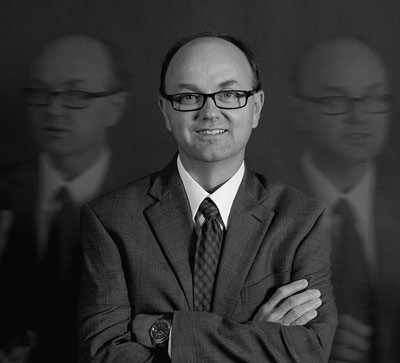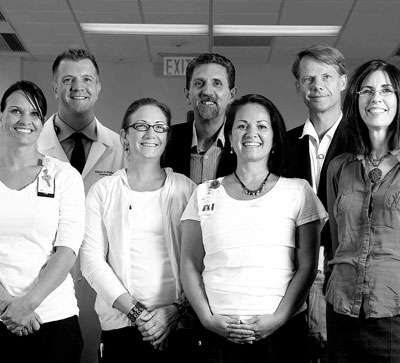The Efficiency Freak

Norm Zabriskie, M.D., describes himself as an “efficiency freak.” You’d never know it by talking with him. His calm, unhurried demeanor belies the high-speed intensity of his glaucoma clinic, where before recently switching to an electronic health record, he saw an average of 80 patients per day. There are no signs of the blistering pace in his waiting room, either. In fact, it’s just a bunch of empty chairs. That’s because the patients are all in exam rooms. Within minutes of arriving, their care has already begun.
In Zabriskie’s clinic, patient care looks a little different too. Here, the start of each visit isn’t just about taking vitals and patient history. It’s about actual visiting. Patients are attended to first by one of Zabriskie’s five highly trained ophthalmic technicians, each of whom sees an average of only 16 patients a day. In addition to collecting every piece of medical data that Zabriskie needs before he walks into the exam room, the techs are empowered to order tests they think are needed, and listen to plenty of patient stories that have nothing to do with glaucoma. “If I’m going to speed up, I tell my techs they’re going to have to slow down,” he says. They talk about new grand babies, minor aches and pains, major family milestones, and, eventually, eyesight issues. By training his techs to handle the data-collecting and relationship-building side of medicine, Zabriskie, who follows a strict scheduling template, can quickly zero in on treating his patients.
While many health care organizations worry about how they’ll be able to survive on Medicare rates, Zabriskie’s hyper-focus on patient flow has it nearly figured out. More than half of his patients have Medicare, yet he has been able to maintain a profitable practice. But it’s more than that. While sustaining the kind of daily patient volume that many would equate with conveyor-belt medicine, Zabriskie and his techs consistently deliver the kind of individualized care that’s exactly the opposite of a factory. And his patient satisfaction scores prove that it works—640 online patient reviews, filled with glowing remarks, rate him on average 4.8 out of 5.
Zabriskie is quick to point out two things: first, his efficiency strategies are specific to a glaucoma clinic, and second, his volume and patient satisfaction scores have dipped slightly since switching to an electronic health record. “Every patient takes a little bit longer, so we have to reengineer things to find where we can shave off a little bit of time,” he says.
What’s not specific to his clinic, however, is his belief that it’s the physician’s job to “bring the magic.” Zabriskie checks his own bad moods and crises at the door every day, and he expects everyone on his staff to do the same. “I don’t ever think that it’s the patients’ privilege to see me,” he says. “It’s just the opposite. It’s my privilege to see them.”



